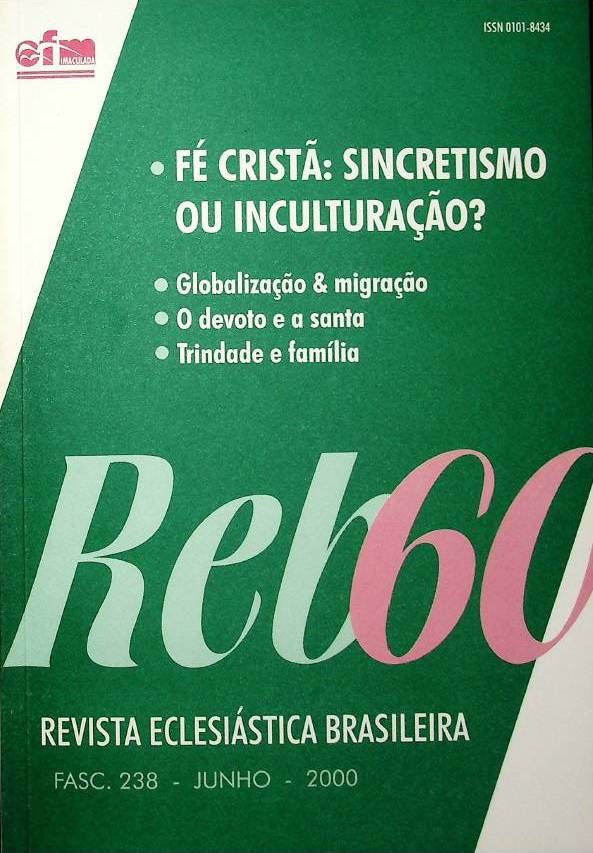A Trindade, arquétipo da família; a família, sacramento da Trindade
DOI:
https://doi.org/10.29386/reb.v60i238.2187Palavras-chave:
Trindade.Resumo
O autor quer mostrar que toda sociedade humana é uma imagem da Trindade e a família o é de modo especial, uma vez que a trindade humana - pai, mãe e filho - foi criada, desde o início, como uma espécie de sacramento natural do Deus-Família. As virtudes dos casados (abertura à vida, mútuo respeito, serviço, comunicação etc.) fazem da família uma imagem da Santíssima Trindade. Segundo João Paulo II. não existe, neste mundo, nenhuma outra imagem mais perfeita para a família do que a de Deus - Unidade e Comunhão. Não há nenhuma outra realidade humana que cor-responda melhor a este mistério divino do que a família. Chegou, pois, a hora de a família reconhecer sua identidade e assumira liderança na renovação da sociedade. Além disso, ao se adotar a visão da família como sa¬cramento da Santíssima Trindade, cria-se também uma nova visão da mulher.
Abstract: The author wants to show that every type of human community is an image ofthe Trinity, and that the human family is in a very special way, because the human trinity offather, mother and child was created from the beginning as a kind of Natural Sacrament of God-Family. The virtues of married couples (being open to life, mutual respect and serying one another, communication etc.) make the family an image of the Trinity. According to John Paul II, in this world there is tio other image for the family more perfect than that which is God as Unity and Communion. There is no other human reality which corresponds better to this divine mystery than the family. It is now time for the family to recognize its identity and assume its leadership in renewing society. Beside this, tofollow this vision ofthe family as sacrament ofthe Trinity will create a new way of looking at and understanding women.Downloads
Downloads
Publicado
Como Citar
Edição
Seção
Licença
Copyright (c) 2020 Revista Eclesiástica Brasileira

Este trabalho está licenciado sob uma licença Creative Commons Attribution 4.0 International License.
Os autores cedem os direitos autorais; como gratificação, a REB oferece dois exemplares ao Autor de um artigo.
A REB adere à licença não comercial (Creative Commons). Portanto, é permitida cópia, distribuição e exibição dos textos, respeitados os direitos autorais e citada a fonte de sua proveniência.


